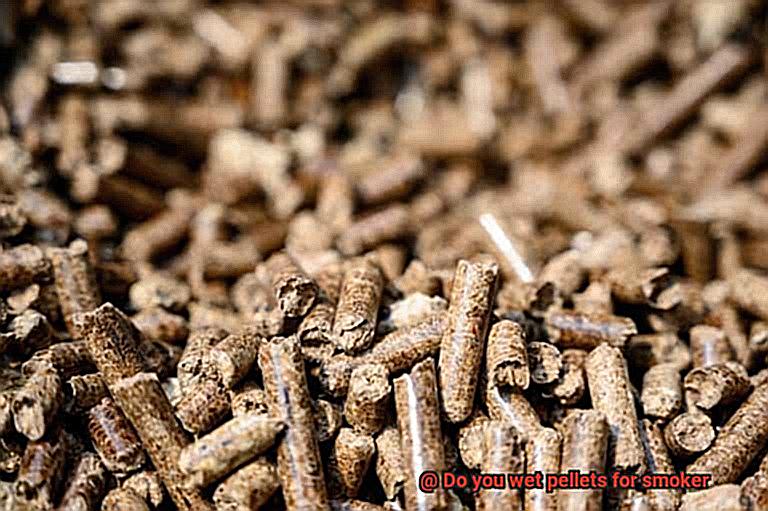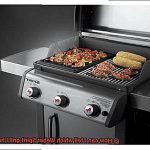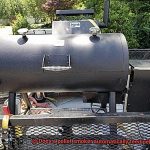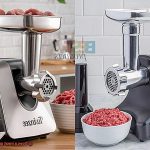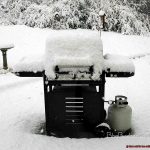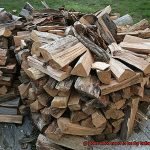Imagine this: the sun is shining, your meat is marinated to perfection, and your smoker is ready to go. All that’s left is to add your wood pellets and start smoking – but should you wet them first? It’s a question that has divided the BBQ community for years.
So, do you wet pellets for smoker? This debate has been raging on for ages. Some swear by wetting their pellets before smoking, claiming it creates more smoke and enhances the flavor of the meat. Others argue that it’s unnecessary and can cause temperature control issues.
In this blog post, we’re going to delve into both sides of this argument and help you make an informed decision about whether or not to wet your pellets before smoking. We’ll explore the science behind smoke production, weigh up the pros and cons of wetting your pellets, and provide some tips to help you achieve the perfect smoke during your next BBQ session.
Whether you’re a seasoned pitmaster or a newbie in the world of smoking meat, understanding how pellets work can make all the difference when it comes to achieving that mouth-watering flavor and texture. So let’s get started and settle once and for all whether or not you should wet pellets for smoker.
Contents
What are Pellets?
Pellets are small, cylindrical pieces of compressed wood that come in a variety of flavors such as hickory, mesquite, applewood, and cherry. They are made from sawdust, wood shavings, and other wood byproducts that have been compressed under high pressure.
One of the most significant advantages of using pellets is that they burn cleanly and produce very little ash. This makes them ideal for smoking meats and other foods. Additionally, they provide consistent heat and smoke for a long period of time, ensuring that your meat is cooked to perfection.
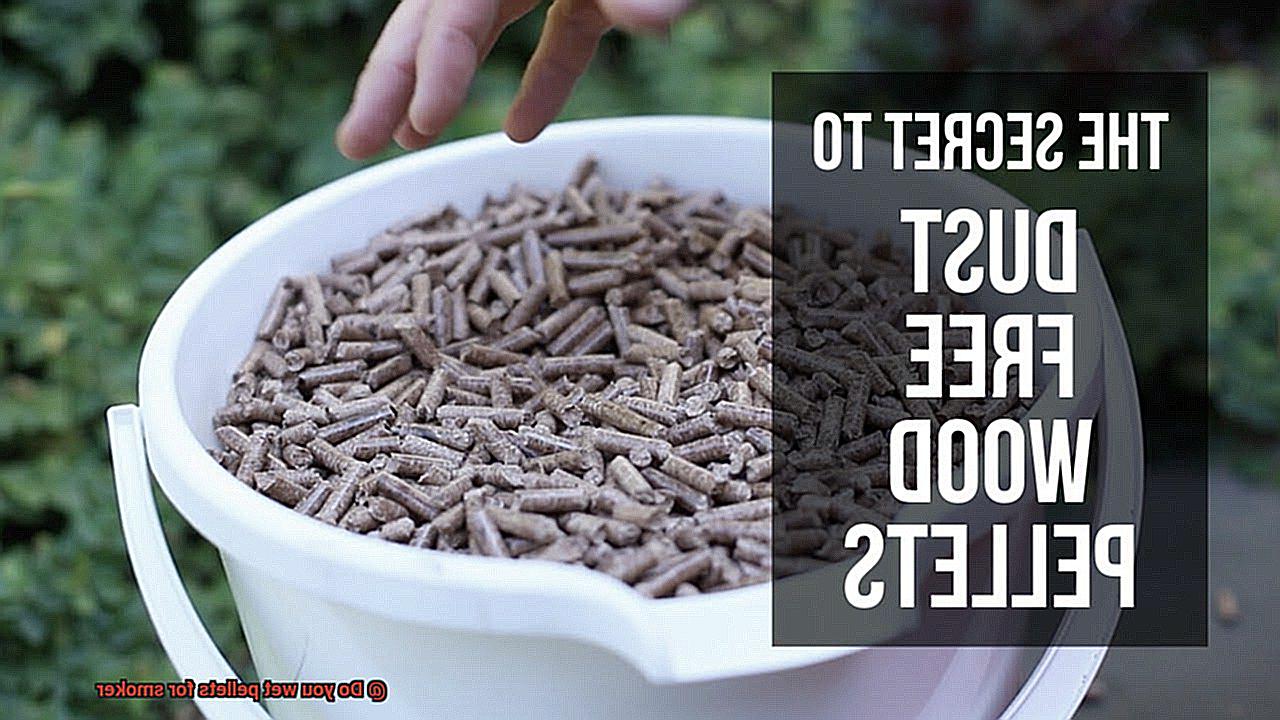
When using pellets in a smoker or grill, it is crucial to choose the right type of pellet for the job. Some pellets are designed specifically for use with certain types of meat or dishes, while others are more versatile. For example, hickory pellets pair well with pork whereas mesquite pellets complement beef dishes.
It is also important to store pellets in a dry place to prevent them from absorbing moisture. Moisture can affect their performance, leading to uneven heat and smoke production.
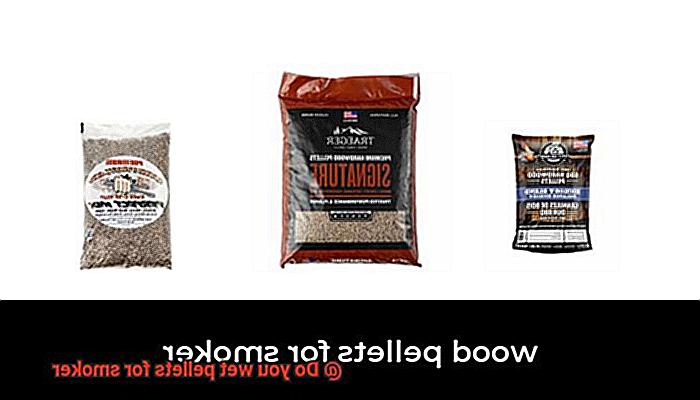
Now, the question arises: do you wet pellets for a smoker? The answer is that it depends on your personal preference and the type of smoker you are using. Some smokers are designed to work best with dry pellets, while others may benefit from wetting them.
However, in general, it is not necessary to wet pellets before using them in a smoker or grill. Wetting pellets can actually hinder their performance by reducing their heat output and creating more steam than smoke. Therefore, it is best to stick with dry pellets unless you are smoking fish or other delicate meats that require a milder smoke flavor.
What are the Benefits of Wetting Pellets?
If you want to take your grilling game to the next level, consider wetting pellets for smoking. As an expert in this area, I can attest to the many benefits of wetting pellets that will make your meat even more flavorful and juicy.
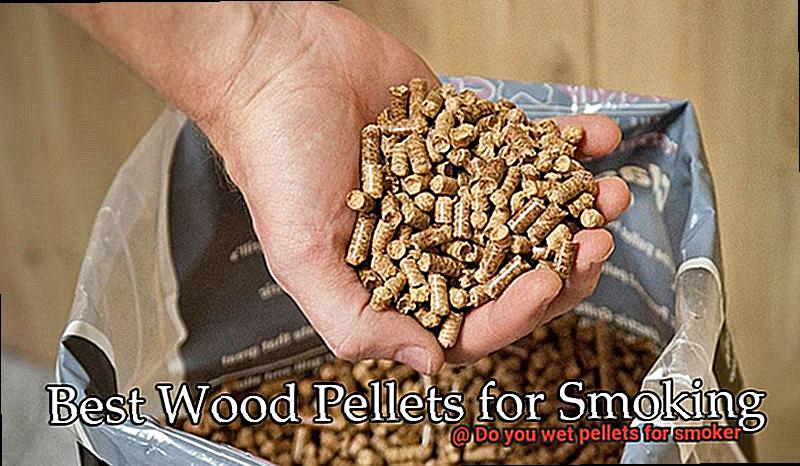
Firstly, wetting pellets can improve smoke production. By taking longer to dry out, wet pellets create smoke for a longer period, resulting in better smoke flavor and aroma. You’ll be able to achieve that perfect smoky taste in your meat with ease.
Secondly, wetting pellets can help reduce temperature fluctuations. Dry pellets burn quickly and can lead to significant temperature changes, but wetting them can help stabilize the temperature and ensure that your meat is cooked evenly throughout the cooking process. No more overcooked or undercooked meat.
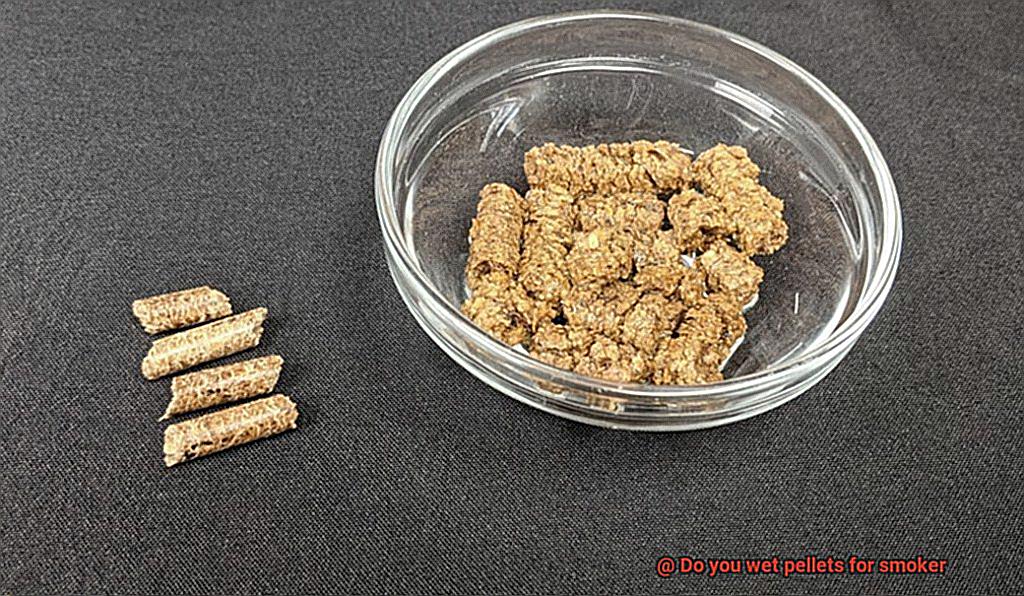
Thirdly, wetting pellets can increase moisture retention in your meat. As the pellets produce more smoke, they create a moist environment within the smoker that helps keep your meat juicy and flavorful. Say goodbye to dry and tough meat.
Furthermore, wetting pellets can be cost-effective. Since they take longer to burn out than dry pellets, you’ll use less of them throughout the cooking process. This means you won’t have to add as many pellets, making them a more economical option in the long run.
What are the Disadvantages of Wetting Pellets?
If you’re an avid smoker, you may be wondering whether wetting your pellets is a good idea. Though some may swear by it, there are some significant disadvantages to consider before making the decision to wet your pellets.
One of the biggest drawbacks of wetting pellets is that it can result in an inconsistent burn. Wet pellets may not burn as hot or evenly as dry pellets, which can lead to subpar meat and an unsatisfactory smoking experience. Additionally, wet pellets can create more smoke than necessary, which can cause creosote buildup in your smoker and negatively impact the taste of your meat.
Wetting pellets also requires time and effort, which can be a hassle for some. Wetting each individual pellet takes time and attention to ensure they are the right level of wetness. Not to mention, wet pellets can be difficult to handle and transport without spilling or sticking together. And let’s face it; nobody wants a mess when they’re trying to enjoy their smoking experience.
Lastly, using wet pellets may dilute the natural flavors of the wood and potentially mask some of the more subtle nuances of the smoke. If you’re looking for an authentic smoking experience, using dry pellets or wood chips is likely your best bet.
How to Wet Pellets for a Smoker
One question that often arises when using pellets in a smoker is whether or not to wet them before use. Let’s explore this technique and help you decide what works best for you.
The Benefits of Wetting Pellets
Wetting pellets can help produce more smoke and maintain consistent smoke levels during long cook times. When pellets are wet, they generate steam, which creates more smoke. This can result in a richer, smokier flavor for your meat.
How to Wet Pellets
To wet your pellets, place them in a container and add water until they are fully submerged. Allow them to soak for at least 30 minutes but no longer than an hour. Drain any excess water from the container before adding the pellets to your smoker.
The Downsides of Wetting Pellets
While wetting pellets can benefit your smoking process, there are also some downsides to keep in mind. Wet pellets take longer to ignite, which can increase cook time and use up more fuel. Additionally, oversaturating the pellets with water could cause them to create excessive steam that might negatively impact the flavor of your food.
Check Your Smoker’s Manual
It’s important to consult your smoker’s manual or do some research online to determine if it is designed specifically for wet or dry pellets. Some smokers may benefit from wet pellets, while others might not require it. Understanding your smoker’s requirements can help you produce the best results.
Personal Preference
At the end of the day, whether or not to wet your pellets is a matter of personal preference. Experiment with both techniques to see which works best for you and your smoker. Remember to prioritize safety when handling hot coals or pellets.
What Type of Smoker Should You Use for Wet Pellets?
Well, the type of smoker you use can make all the difference. As an expert in this field, let me break down the best options for wet pellet smoking.
First up, electric smokers. These are perfect for beginners because they are easy to use and control. Electric smokers have a heating element that heats up the wet pellets and creates smoke. Plus, they have a water pan that helps keep your meat moist and juicy. However, some electric smokers may not get hot enough to create a robust smoke flavor.
Next on our list is pellet grills. These grills use wood pellets as fuel and have a hopper that feeds the pellets into the firepot. They are versatile and can be used for smoking, grilling, and even baking. The wood pellets create that rich smoky flavor we all crave, and they too have a water pan or drip tray to keep your meat juicy.
But what features should you consider when choosing a smoker for wet pellet smoking? First up is size. If you’re cooking for a crowd, then a larger smoker will be more efficient. If you’re cooking for yourself or a small group, then a smaller smoker will do the trick. Next is temperature range. A smoker with a wide temperature range will give you more control over the cooking process so you can experiment with different flavors. Finally, consider moisture retention capabilities. A smoker with good moisture retention will help keep your meat tender and juicy.
Tips for Getting the Best Results When Smoking with Wet Pellets
Smoking meat with wet pellets can be a fantastic way to add flavor and moisture to your meals. However, it does require some knowledge and technique to get the best results. Here are some tips to help you become a pro at smoking with wet pellets.
Use high-quality pellets
The first step in getting great results when smoking with wet pellets is to use high-quality pellets that are specifically designed for smoking. Make sure they are made from hardwoods like oak, hickory, or mesquite, and free from any additives or fillers.
Soak the pellets
Soaking your pellets for at least 30 minutes before using them in your smoker is crucial. This helps prevent them from burning too quickly and produces a steady stream of smoke throughout the smoking process.
Don’t over-soak the pellets
While soaking pellets is important, it’s equally important not to over-soak them. If they become too saturated with water, they may not produce enough smoke and could even extinguish the fire in your smoker. A good rule of thumb is to aim for pellets that are moist but not dripping wet.
Use a smoker box or foil packet
Using a smoker box or foil packet can help contain the wet pellets and prevent them from falling through the grates of your smoker. This ensures even distribution of smoke throughout the smoker and prevents any hotspots.
Monitor the temperature
Wet pellets can lower the temperature inside your smoker, so keep an eye on the temperature throughout the smoking process. You may need to adjust your heat source or add more pellets as needed to maintain the desired temperature.
Experiment with different types of wood
Different types of wood pellets will produce different flavors, so try experimenting with different types and soaking times to find what works best for you. Hickory and mesquite are popular choices when it comes to smoking meat, but there are many other options to explore.
Be patient
Smoking with wet pellets can take longer than smoking with dry pellets, but the results are often worth it. Don’t rush the smoking process and enjoy the delicious flavors of perfectly smoked meat.
Common Mistakes to Avoid When Smoking with Wet Pellets
First and foremost, don’t overdo it with the water when wetting your pellets. While it’s important to wet them to prevent quick burning, using too much water can lead to soggy pellets that are difficult to ignite. Aim to soak them for at least 30 minutes, and make sure they’re damp but not dripping wet.
Secondly, be patient and let the pellets dry out before using them. Wet pellets produce excess steam and smoke, leading to an unpleasant flavor profile and poor cooking results. You could let them dry out in the sun or on a baking sheet in your oven to ensure they are completely dry.
Another mistake to avoid is not using a proper container when soaking the pellets. Avoid using dirty containers that can lead to contamination and unsafe cooking conditions. Instead, use a clean, food-safe container like a ziplock bag or plastic container with a lid.
Lastly, don’t forget to check the quality of your pellets before using them. Using low-quality pellets will not improve their performance or flavor, so invest in high-quality pellets for the best results. Experiment with different types of wood and find your favorite for that perfect smoky flavor.
7zpLZ1AW0TY” >
Conclusion
To sum it up, the wet pellet debate is one that has raged on for years. While some people swear by soaking their pellets, others argue that it’s unnecessary and can cause issues with temperature control. Ultimately, the decision to wet your pellets comes down to personal preference and the type of smoker you’re using.
Pellets are small, cylindrical pieces of compressed wood that come in a variety of flavors. They’re made from sawdust, wood shavings, and other wood byproducts that have been compressed under high pressure. When using pellets in a smoker or grill, it’s essential to choose the right type of pellet for the job and store them in a dry place to prevent them from absorbing moisture.
Wetting your pellets can have several benefits, including improved smoke production, reduced temperature fluctuations, increased moisture retention in meat, and cost-effectiveness. However, it can also lead to an inconsistent burn and potentially dilute natural flavors.
To get the best results when smoking with wet pellets, use high-quality pellets specifically designed for smoking. Soak them for at least 30 minutes but not too long as they could become oversaturated with water. Use a smoker box or foil packet to contain the wet pellets and prevent hotspots. Monitor the temperature throughout the smoking process and be patient as smoking with wet pellets can take longer than with dry ones.
Avoid common mistakes like over-wetting your pellets or using low-quality ones.

